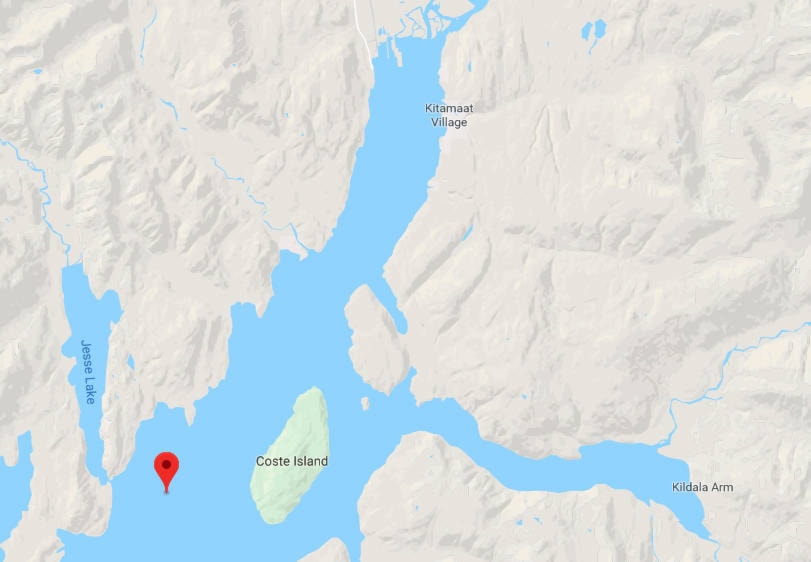Local and other mariners will be without weather data provided by a Meteorological Service of Canada buoy until spring because it is being taken out of the water for repairs.
Located at Nanakwa Shoal in the Douglas Channel south of Kitamaat Village, harsh weather conditions on Oct. 13 put two wind sensors on the buoy out of commission, says Environment and Climate Change Canada, the meteorological service’s parent department.
While the buoy continues to report wave height, wave period, air temperature, sea surface temperature and air pressure, the wind sensors can only be repaired by taking the buoy out the water.
“Due to the large size of the moored buoy, in order to complete the repairs Environment and Climate Change Canada must collaborate with the Canadian Coast Guard for access to a specialized vessel required to tow the buoy,” the department said in a release.
“We are presently requesting a vessel to visit the buoy in order to remove it from the water to perform the required repairs. Once removed from the water, repairs to the wind sensors will be completed in spring 2018, and the buoy will be returned to its current monitoring location.”
Local mariner Tracey Hittel said the absence of wind information is already proving to be a challenge for every class of vessel operator.
“We just don’t know that we’ll be into the bad stuff until we’re out there,” he said.
The arrival of the winter storm season brings an additional worry for mariners, Hittel added.
“You can be out there and all of a sudden you have 15-foot waves which can be bad,” he said.
“You’re going out there blind.”
Despite the problems with the Nanakwa Shoal buoy, Environment Canada said it is confident it can still provide accurate information for the area.
“Environment and Climate Change Canada meteorologists use a variety of other tools for severe weather detection and prediction. This includes radar, satellite images, surface weather stations, lightning detectors, and sophisticated computer models to give Canadians the most accurate weather information possible,” said the department.
“Moving into winter storm season, we have sufficient total data from a variety of tools to provide accurate information to the public. We do not anticipate a service gap.”
